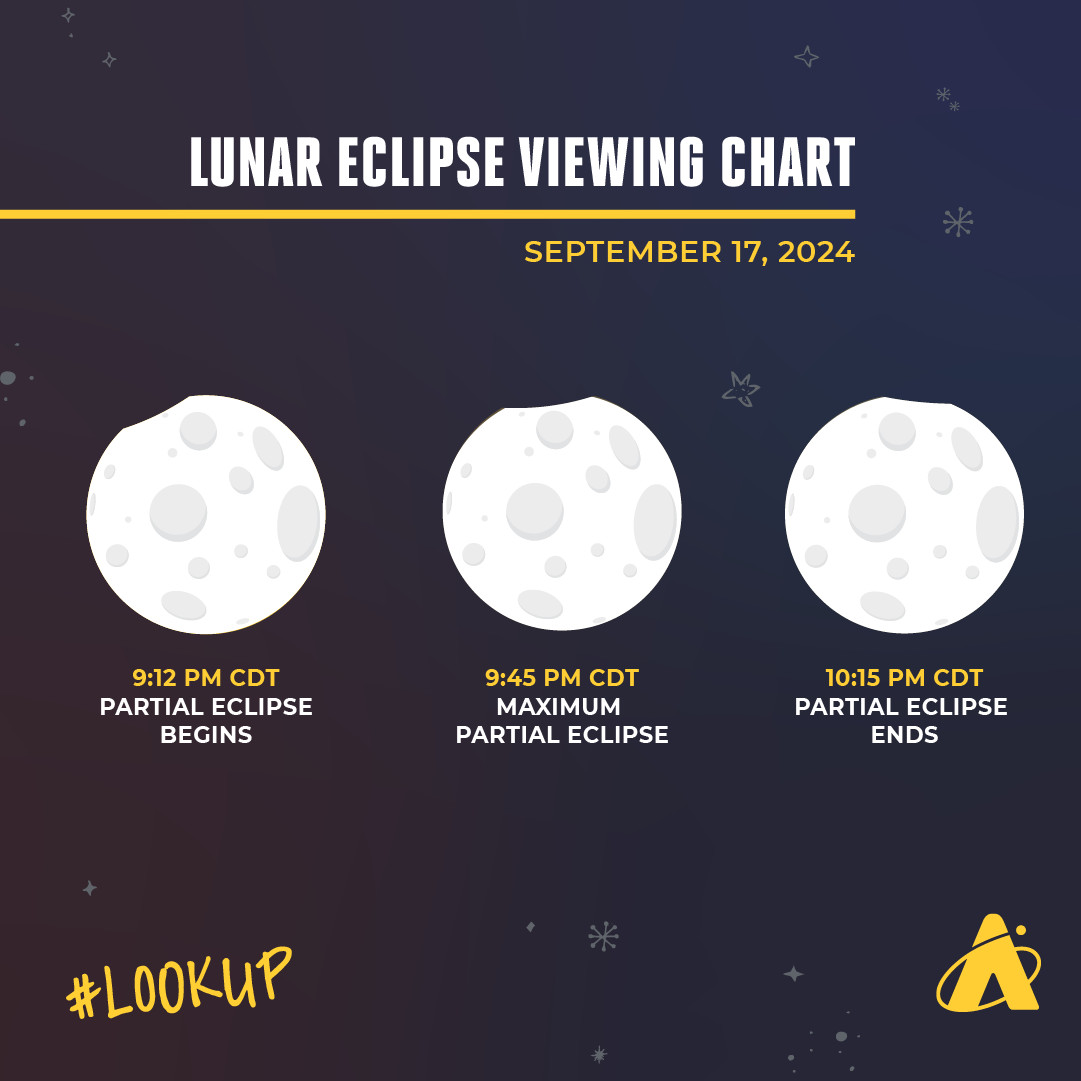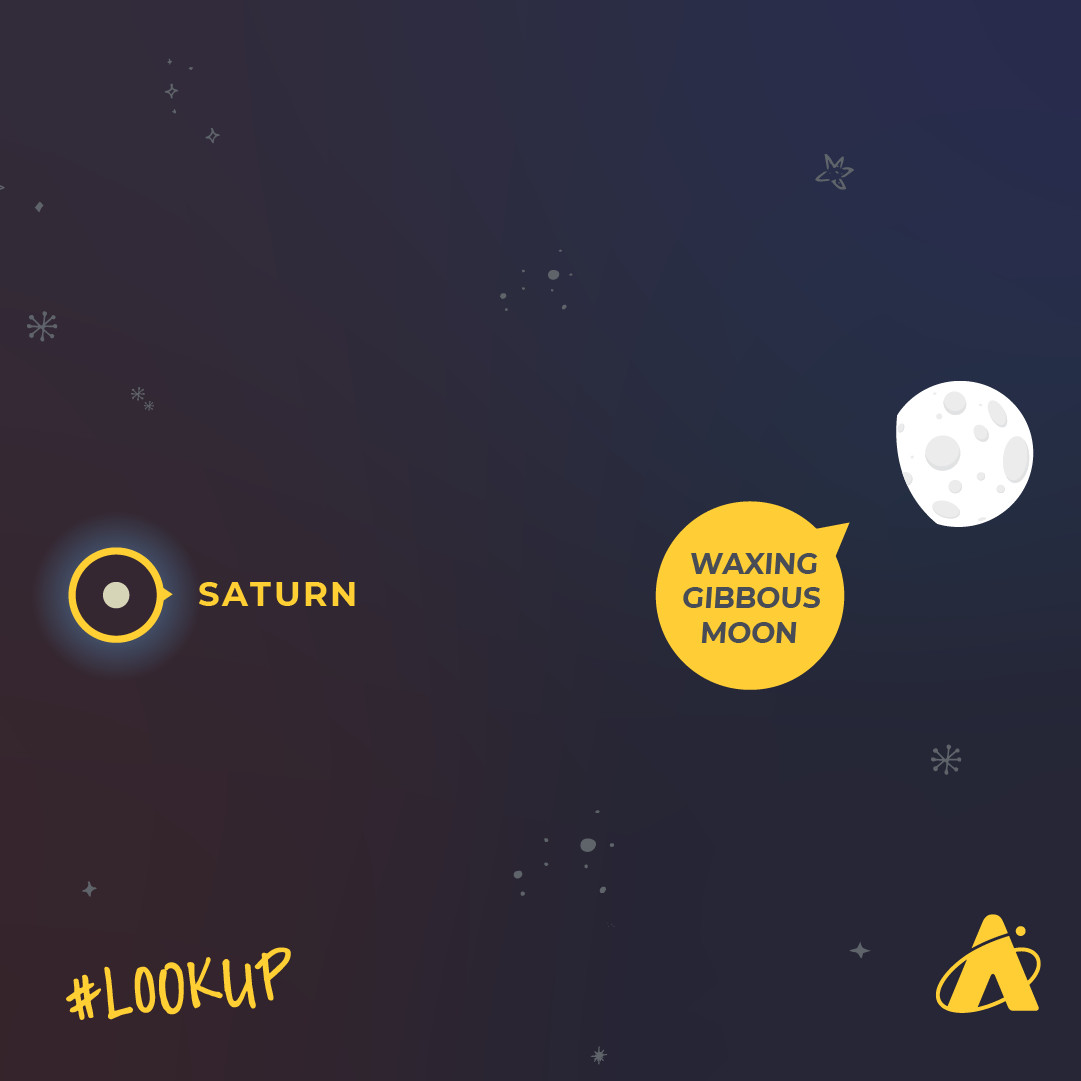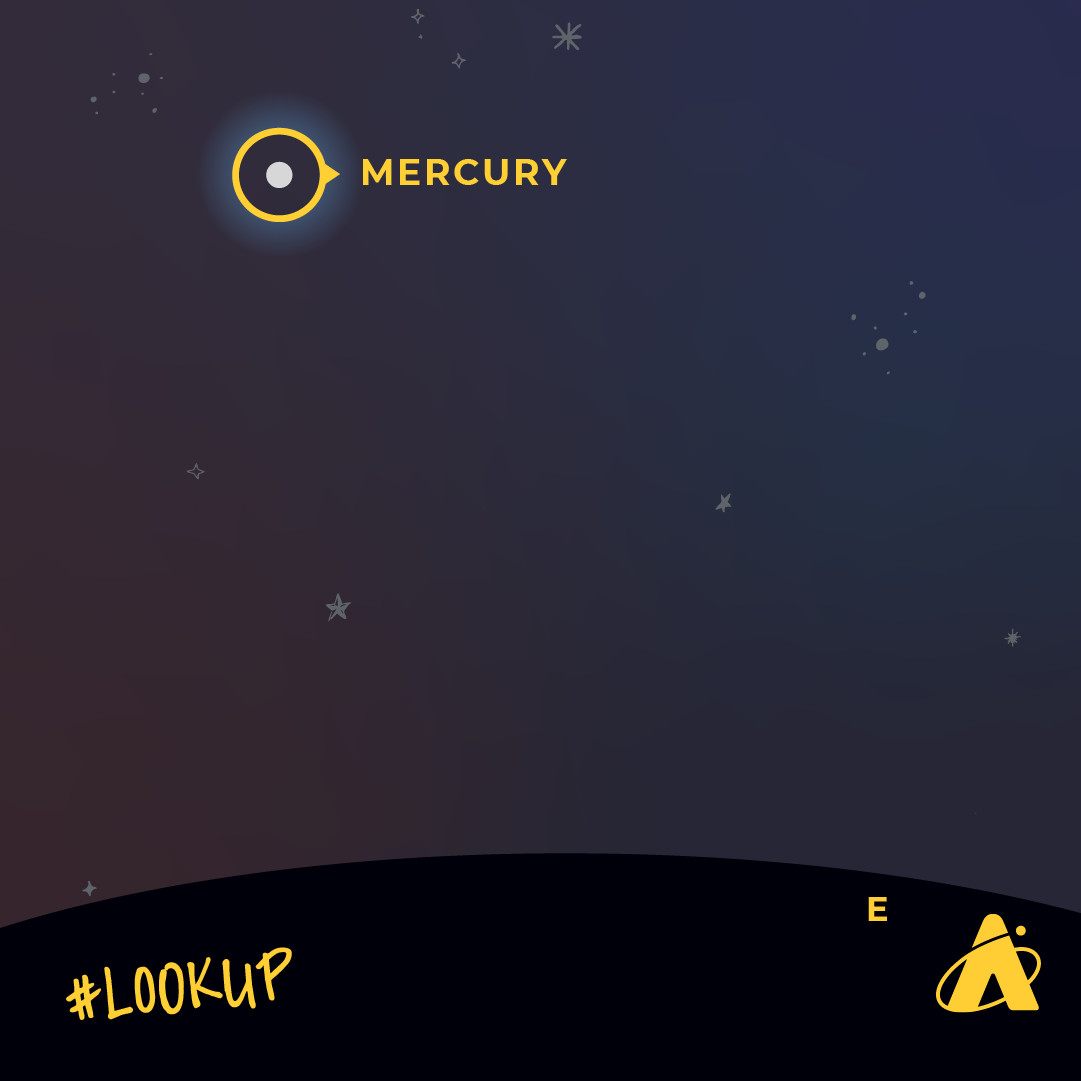September 2024 is shaping up to be a fantastic month for skywatchers, headlined by a lunar eclipse coinciding with the beautiful Harvest Moon. This September’s full Moon, while always a special sight, carries extra intrigue as it will be subtly kissed by Earth’s shadow in a partial lunar eclipse.
While not the dramatic, blood-red spectacle of a total lunar eclipse, this celestial event offers a unique opportunity to witness the subtle dance of the Earth, Moon, and Sun. Adding to the month’s astronomical highlights, we also have the autumnal equinox and excellent planet visibility. Let’s delve into what makes this lunar eclipse special and where you can witness it.
The Partial Lunar Eclipse of September 2024
This year’s Harvest Moon, occurring on September 17th, is already noteworthy as it falls closest to the autumnal equinox. Adding to its significance, it’s also considered by some to be a supermoon. This means the Moon will be a bit closer to Earth than average, approximately 223,000 miles away compared to the average distance of 238,900 miles. While the supermoon aspect might make it appear slightly larger and brighter, the real highlight is the partial lunar eclipse it will undergo.
However, it’s important to set expectations: this won’t be a total lunar eclipse. Instead, the Earth’s shadow will only clip a small portion of the Moon. According to the Adler Planetarium, the partial eclipse will begin at 9:12 pm CDT, reach its maximum at 9:45 pm CDT, and conclude by 10:15 pm CDT.
 Adler Planetarium infographic depicting a viewing chart for the September 17, 2024, lunar eclipse. Header text reads “LUNAR ECLIPSE VIEWING CHART – SEPTEMBER 17, 2024.” Below, there are three illustrations of the Moon with various slivers missing from the top. Text reads “9:12 PM CDT PARTIAL ECLIPSE BEGINS,” “9:45 PM CDT MAXIMUM PARTIAL ECLIPSE,” and “10:15 PM CDT PARTIAL ECLIPSE ENDS.” “#LOOK UP” is in the bottom left corner with the Adler Planetarium’s yellow logo in the bottom right corner.
Adler Planetarium infographic depicting a viewing chart for the September 17, 2024, lunar eclipse. Header text reads “LUNAR ECLIPSE VIEWING CHART – SEPTEMBER 17, 2024.” Below, there are three illustrations of the Moon with various slivers missing from the top. Text reads “9:12 PM CDT PARTIAL ECLIPSE BEGINS,” “9:45 PM CDT MAXIMUM PARTIAL ECLIPSE,” and “10:15 PM CDT PARTIAL ECLIPSE ENDS.” “#LOOK UP” is in the bottom left corner with the Adler Planetarium’s yellow logo in the bottom right corner.
Where Can You See This Lunar Eclipse?
Partial lunar eclipses are less geographically restrictive than total lunar eclipses. The September 2024 partial lunar eclipse will be visible from anywhere on Earth where the Moon is above the horizon during the eclipse timings. This broadly includes regions in the Americas, Europe, and Africa, and parts of Asia.
To determine if you’re in a viewing location, consider that the eclipse is happening in the evening hours of September 17th Central Daylight Time (CDT). If the Moon is visible in your night sky during these hours, you have a chance to witness the subtle shading as the Earth’s penumbra and umbra touch the lunar surface. Check time zone converters to see how CDT translates to your local time to pinpoint the eclipse window in your area. While no special equipment is needed, binoculars or a telescope can enhance your view, allowing you to better appreciate the subtle shadow creeping across the Moon.
Other September Sky Events to Watch For
September offers more than just the lunar eclipse. Here are a few other celestial events to keep an eye out for:
The Harvest Moon and Autumnal Equinox
As mentioned, the September full moon is known as the Harvest Moon, traditionally named because its light aided farmers in harvesting crops late into the night. This year, it’s exceptionally close to the autumnal equinox, which falls on September 22nd at 7:44 am CDT, marking the official start of fall in the Northern Hemisphere. The equinox itself is when day and night are roughly equal in length around the globe.
Chicagohenge
For those in Chicago, and even those interested in unique urban astronomical phenomena, the autumnal equinox brings “Chicagohenge.” Around the equinox, the setting Sun aligns perfectly with Chicago’s east-west streets, creating a stunning visual effect as the sunlight is framed by the city’s skyscrapers. This phenomenon occurs for a few days before and after the equinox.
 Adler Planetarium infographic depicting Chicagohenge. The Sun sets directly in the middle of the street in between skyscrapers on either side. Chicago’s L train runs perpendicular to the buildings, elevated above the street. A warm golden hue filters the illustration, creating the look of sunset. Text reads “‘CHICAGOHENGE’ VIEWING CHART – SEPTEMBER 19–22,” “JUST AFTER LOCAL SUNRISE & JUST BEFORE LOCAL SUNSET – LOOKING DUE EAST/ DUE WEST.”
Adler Planetarium infographic depicting Chicagohenge. The Sun sets directly in the middle of the street in between skyscrapers on either side. Chicago’s L train runs perpendicular to the buildings, elevated above the street. A warm golden hue filters the illustration, creating the look of sunset. Text reads “‘CHICAGOHENGE’ VIEWING CHART – SEPTEMBER 19–22,” “JUST AFTER LOCAL SUNRISE & JUST BEFORE LOCAL SUNSET – LOOKING DUE EAST/ DUE WEST.”
Planet Spotting
September is also a great month for planet viewing:
- Venus: The brightest planet will be visible low in the western sky shortly after sunset, especially in the early part of the month. Look for it about 30 minutes after sunset, very low to the west-southwest later in September. On September 5th, Venus will be near a waxing crescent Moon, making for a beautiful pairing.
 Adler Planetarium infographic depicting Venus and a waxing crescent Moon in close proximity on September 5, 2024. Atop a dark blue starry night backdrop, a bright white dot with a yellow identifying circle that reads “VENUS” sits to the right of a crescent Moon with a yellow identifying tag that reads “WAXING CRESCENT MOON.” At the bottom of the image, resting on the black horizon line is a yellow “W,” identifying the due west. “#LOOK UP” is in the bottom left corner with the Adler Planetarium’s yellow logo in the bottom right corner.
Adler Planetarium infographic depicting Venus and a waxing crescent Moon in close proximity on September 5, 2024. Atop a dark blue starry night backdrop, a bright white dot with a yellow identifying circle that reads “VENUS” sits to the right of a crescent Moon with a yellow identifying tag that reads “WAXING CRESCENT MOON.” At the bottom of the image, resting on the black horizon line is a yellow “W,” identifying the due west. “#LOOK UP” is in the bottom left corner with the Adler Planetarium’s yellow logo in the bottom right corner.
- Saturn: Rising in the southeast in the late evening, Saturn will be visible for much of the night. On the night of September 16th and early morning of the 17th, it will be close to a nearly full Moon.
 Adler Planetarium infographic depicting Saturn and a waxing gibbous Moon in close proximity on September 16, 2024 through the morning of September 17, 2024. A white dot, identified with a yellow circle around it and text that reads “SATURN,” sits to the left of a gibbous Moon with a yellow identifying tag that reads “WAXING GIBBOUS MOON.” “#LOOK UP” is in the bottom left corner with the Adler Planetarium’s yellow logo in the bottom right corner.
Adler Planetarium infographic depicting Saturn and a waxing gibbous Moon in close proximity on September 16, 2024 through the morning of September 17, 2024. A white dot, identified with a yellow circle around it and text that reads “SATURN,” sits to the left of a gibbous Moon with a yellow identifying tag that reads “WAXING GIBBOUS MOON.” “#LOOK UP” is in the bottom left corner with the Adler Planetarium’s yellow logo in the bottom right corner.
- Jupiter: Rising around midnight at the start of the month and earlier by month’s end, Jupiter will become increasingly prominent in the night sky and brighter as the month progresses. Late on September 23rd and early on the 24th, it will be near a waning gibbous Moon.
- Mars: Rising after midnight, Mars will also become more visible throughout September. On the morning of September 25th, look for Mars near a waning crescent Moon.
- Mercury: For a challenge, try spotting Mercury in the pre-dawn eastern sky during the first week of September.
 Adler Planetarium infographic depicting Mercury in the eastern sky in September 2024. A white dot, identified with a yellow tag reading “MERCURY,” is in the top left corner of the image. At the bottom, a black horizon line is seen with an “E”, marking due east, in the bottom left corner. “#LOOK UP” is in the bottom left corner with the Adler Planetarium’s yellow logo in the far bottom right corner.
Adler Planetarium infographic depicting Mercury in the eastern sky in September 2024. A white dot, identified with a yellow tag reading “MERCURY,” is in the top left corner of the image. At the bottom, a black horizon line is seen with an “E”, marking due east, in the bottom left corner. “#LOOK UP” is in the bottom left corner with the Adler Planetarium’s yellow logo in the far bottom right corner.
Moon Phases for September 2024
Mark your calendars with these key Moon phases for September (CDT):
- New Moon: September 2
- First Quarter Moon: September 11
- Full Moon (Harvest Moon & Partial Lunar Eclipse): September 17
- Last Quarter Moon: September 24
Don’t Miss the September Skies
September 2024 is packed with celestial events. From the subtle beauty of the partial lunar eclipse during the Harvest Moon to the equinox and planet visibility, there’s something for every stargazer. So, step outside, look up, and enjoy the wonders of the September night sky! For more in-depth information and resources, be sure to check out institutions like the Adler Planetarium, which provide excellent guides and programs for sky enthusiasts.
